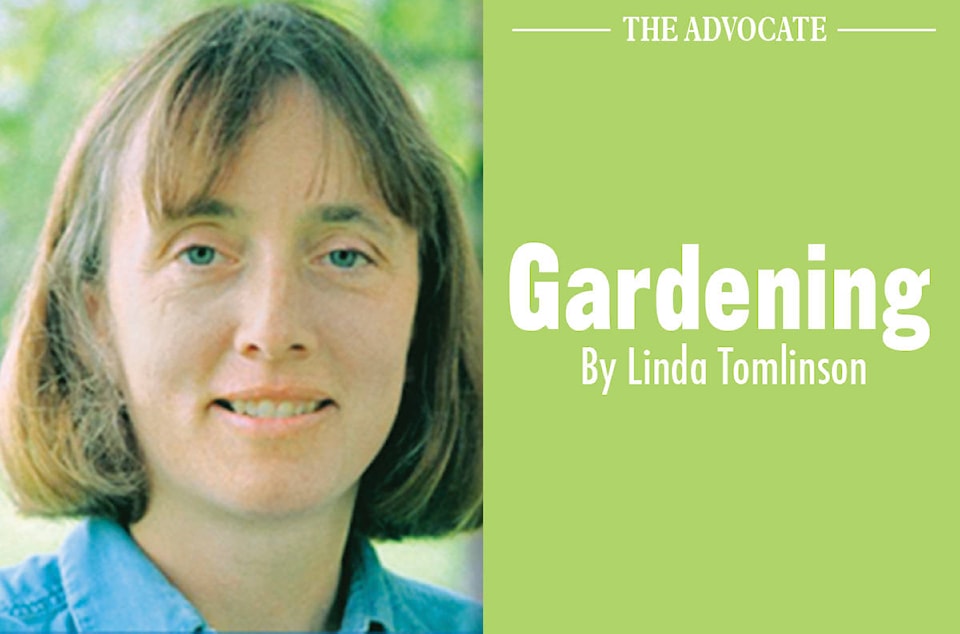When the weather turn cold and the ground freezes, people retreat indoors. Not so with the birds. The ones that are here for the winter go about their daily activities adding color and life to the garden.
Birds tend to gather in areas where there are trees and shrubs, in other words natural cover but with patience they can be enticed into most yards.
As with any dinner guest it is necessary to provide the correct food. With the many different types of birdseed on the market it can be confusing. Sunflower seeds, black oil or white striped, attract the largest variety of birds in Central Alberta. It can be messy as birds will drop the shells wherever leaving piles to be cleaned up.
Sunflower seed are put in hoppers, tube feeders are placed in trays. Hoppers are available in many sizes. When the bottom seeds are removed, the seeds on top move downwards. Large hoppers make it possible to spend less time filling feeding stations. This size of tray on each side of the hopper determine which birds can feed. Large distances between the perch and tray allow larger birds to feed.
Tube feeders are a covered tube with a number of perches allowing birds to feed at individual stations. Larger holes are needed for sunflowers compared to the small openings for nyger seed.
Trays can be on the ground, or raised. They may or may not have a roof. These feeders need to be replenished daily. Seeds in roofless trays will become buried by snow and have to be cleaned and replenished between storms. As trays are often close to the ground they attract ground feeding birds.
There are other many other types of seeds, nuts and meals on the market that are attractive to specific varieties of birds. Do some research to decide which birds you wish to attract before making a purchase. Myrna Peaman’s book “Backyard Bird Feeding” has an extensive list matching birds to types of food. Large, clear pictures of each bird make identification easy.
It is best to avoid seed mixtures unless they are mixes of native materials that are made specifically for the area. Often bird seed mixes are manufactured elsewhere and shipped throughout North America. If the birds are not familiar with the seeds chances are they will not eat them. Unfamiliar seed will be swept out of the feeder and on to the ground by the birds’ beak. The result is a waste of money and extensive weeding in the spring.
Suet is a fat that provides energy when consumed. It can be fed to the birds plain or mixed with unsweetened, unsalted peanut butter and other grains. The best suet comes from around the heart and kidneys of cattle and sheep. It can be purchased at grocery stores and meat markets in the raw form and rendered or purchased ground, rendered and ready to use. Shortening is easy and cheap to use in a suet mixture but it isn’t considered a healthy choice for humans and might not be the best for birds either. Lard is from pigs, not the bird’s first choice but they will eat it.
Suet can be placed in a mesh bag or metal cage that does not contain sharp edges. Birds will hang on the container and feed. Suet feeders need to be placed out of the reach of dogs and other hungry creatures.
Open water will encourage birds to visit the yard but is not a necessity as birds native to the area eat snow and ice. For those how wish to provide open water, there are a number of options available from commercial bird baths to DIY plans on the internet or even an electric dog waterer.
Do some planning before setting up a bird feeder or waterer. To minimize the amount of birds hitting the window the feeder should either be within three feet (1 meter) of the window or more than 13 feet (4 meters) from the window. Feeders placed in the area between 3-13 feet (1-4 meters) increase the chance of the window collisions especially if the bird is being chased.
The height of hopper feeders depends on what other animals inhabit the same space. Deer and moose will quickly empty a feeder which can be avoided by using a pulley system to keep the feeder high and out of reach unless it is being filled.
Want to feed the birds but don’t know how to start? Myrna Pearman, from the Ellis Bird Farm will be giving a talk at Parkland Nurseries Friday Oct. 20, from 6:30 to 9:30. Cost $15 payable to Parkland Nurseries. Myrna is one of the local bird experts. She has written a couple of books on birds and other animals in the garden and has recently published “Beauty Everywhere” a photo essay on local birds.
Linda Tomlinson is a horticulturalist that lives near Rocky Mountain House. She can be contacted at
your_garden@hotmail.com.
